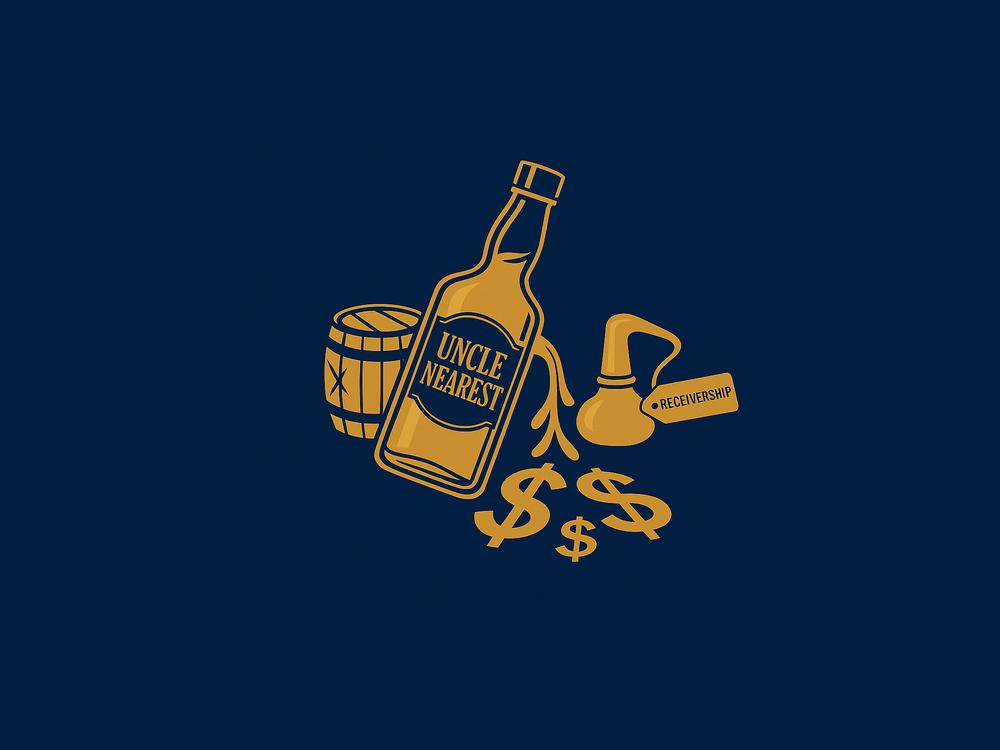Uncle Nearest: The Oldest New Distillery in America Faces Bankruptcy (Possibly, But Not Yet)

Published November 8, 2025 by John Fegan
Contents
Few whiskey brands can claim roots deep in the 1850s while only having an official birth certificate from 2017. Uncle Nearest manages it with the kind of confidence usually reserved for politicians, like saying you’ve been a punk since birth but your first gig was last Tuesday.It is, therefore, both the oldest and the newest whiskey you’ve ever heard of, which is a bit like Schrödinger’s bottle, only with better packaging.
This marketing paradox that puts it in the same league as Glenturret, which insists on being Scotland’s “oldest working distillery” despite the extremely inconvenient fact it began operating in 1957. But heritage only gets you so far when the bank balance starts looking like a tragic character arc and Uncle Nearest has run into a less philosophical problem. The sort of problem that involves $108 million in loans and a receiver who doesn’t drink whiskey but probably needs to.
How we got here (and why a Cognac château is involved)
The tale begins, as so many good ones do, with a man and a still. Nathan “Nearest” Green was the distiller who taught a young Jack Daniel how to coax alchemy from grain and fire. Out of this came a legend, a mission, and a line of bottles so polished you could probably see the truth reflected in them, if you squinted and ignored the accountants. It could have stayed that way. It should have stayed that way.
But then someone in a boardroom apparently decided the next logical step in honouring an American whiskey legend was to buy a Cognac château, a few vineyards, and a patchwork of scenic dreams they could never quite afford. The kind of decision that sounds visionary right up until the invoices arrive.
Now the whole operation’s in the hands of Receiver Phillip G. Young Jr, who’s been handed the corporate equivalent of a ticking still. His job is to flog the fancy French bits before the whole thing goes kaboom, and hope the whiskey’s still worth saving.
Young, to his credit, has already performed several small miracles. So far he already:
- Secured $2.5 million in short-term funding from the company’s lender, which is the financial equivalent of finding a gold coin in the sofa cushions of a burning house.
- Built a 13-week budget showing the business can stay upright, so long as nobody starts shopping for another château.
- Laid off 12 employees, which is the corporate version of quietly turning off a few of the less crucial life support machines and hoping nobody notices the silence.
Shipments have resumed, interested investors are sniffing around, and nothing is actually on fire. Financially speaking. Yet.
Bankruptcy: not happening, but also very much happening in the background
Farm Credit Mid-America, the lender writing the lawsuit that never ends, claims Uncle Nearest overstated its aging barrels by $24 million. That kind of optimism belongs to dreamers, crypto founders, and anyone who thinks IKEA is a twenty-minute errand.
A federal judge placed the company under receivership, granting Young the authority to rebuild or surrender. Which is either admirable or suicidal depending on the next balance sheet.
“The company has significant value and can be reorganised as a going concern,” Young wrote, which is legal code for, “We do not need to sell this place for parts if everyone remains calm.”
Fawn and Keith Weaver had a wee flirtation with Chapter 11 before the receiver showed up and talked them off the ledge. Probably for the best. Filling out bankruptcy paperwork makes purgatory look like a spa day.
The oldest new distillery still standing… mostly
For now, Uncle Nearest continues to operate, bottles continue to reach shelves. The legend is still very much alive. The vineyards are not. The Cognac château is not. The French real estate portfolio is, with some relief, ceasing to exist. Whiskey, yes. Château, no.
Thus the company returns, slowly, awkwardly, and at great expense, to the purpose it was always meant to serve: making whiskey and telling an overdue American story, rather than dabbling in the curious business of owning small bits of France. There’s a reason real estate investment trusts don’t come with excellent tasting notes.
Whether it emerges triumphant or becomes an MBA case study titled “Please Stop Buying Things You Can’t Afford” remains to be seen. But the stills have not been switched off, the company has not declared bankruptcy, and the oldest new distillery in the nation is still open for business.
Which, in the world of modern whiskey, is as close as anyone gets to a happy ending before the universe remembers the next quarterly report.

